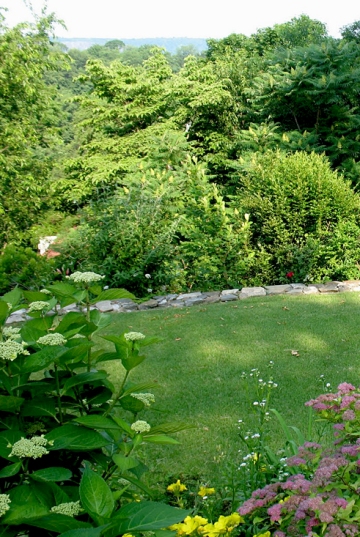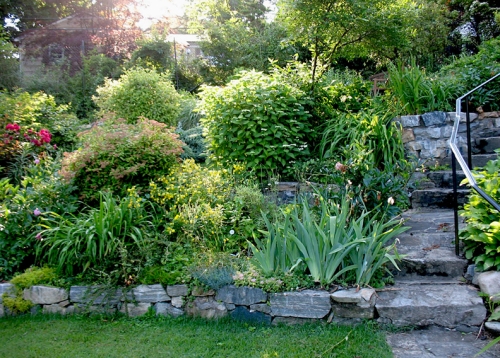Our footprint is too big! We are holding down the fort on a five bedroom, three bathroom home. We kept the children's three bedrooms as they left them, expecting that they might come back.
For the first decade after all our kids left for college, they did come and go,dropping off more stuff in their rooms with each visit. They came home for the summer break, and between summer internships, left for graduate school, came home for weekends and vacations, showed up for short-term jobs, and eventually got their own apartments, leaving more items at home, in their room, and in the basement. They left behind their childhood books and toys, school books, skis, sweaters, jackets, gloves, boots, sleeping bags, posters,old correspondence, lecture notes,records,CD's, and the list goes on.
Then came our second decade after our children graduated from high school and left for college. All three or our adult children acquired their own homes or apartments and are busy with careers and jobs, their own families and friends. We are very happy that they are all independent. They are now making their own collections of furniture, books and children's toys. We can visit them and read their books, sit on their furniture and play with their kid's toys!
We are about to go into our third decade since our eldest child left for college. We see the need to downsize our home to fit our current needs. We are two people with a large network of family and friends. Our children and friends visit, but they don't live with us except for very short periods of time. As of this year, we are both retired.
We have always had plans, goals, and things to do. We don't expect that this will change. We are making plans for this upcoming decade. One big plan is to have a smaller footprint.
We have a habit of sipping a cup of coffee in the morning while still sitting in bed, and talking things over. The other day, we decided to list our current downsizing goals. Here they are.
- Have what we need;
- Need and use what we have;
- Live simply and respect the environment;
- Keep a place to hang our hat and call home and welcome others into it;
- Eat nutritious food, sleep well and get regular exercise;
- Enjoy good friends and meet some new ones;
- Continue learning and develop new skills;
- Be available to our children, grandchildren, family and friends;
- Contribute to our community;
- Be appreciative and thankful for what we have and show our gratitude.
 |
| 1960's renovated home |
 |
| Our children and grandchilddren at the beach |
This decision to live more simply happened over a period of time and not overnight. We started our retirement plan several years ago when we found a 1960's home to renovate in the Bahamas, and bought it as is, even though we were both still working at the time. It is now fully renovated and we live there during the heaviest part of winter. We have established good
friendships in the Bahamas and live in a wonderful, eclectic community. We eat a lot of fresh fish caught locally and take our salads from our garden in the backyard and share food through exchanges with our neighbors, both Bahamian and foreign. Our adult children and
their families visit us in the winter for long beach walks, ocean swimming, kayaking and family
reunions and we all enjoy the respite.

As a second step in the direction of downsizing and living more simply, we are making plans to sell our home of thirty years. It is an absolutely beautiful home, infused with sunlight, sitting on a slope with great views of The Palisades, with a lovely garden, and plenty of memories. We commuted to our jobs in New York City from this place. We brought up our children and schooled them here.

We will always love this home. But now we are done with the commute, we no longer need this school system and the high taxes that come with it, and we live alone. It is time to share this wonderful house with a family that can really use it. I know that they will love it as much as we have.
 |
| Storm damage |
As a third step in this direction we are reconstructing a tiny lake cottage that we have owned and used for 20 years as a hide away and camping site. We are taking our 500 square foot lake cottage with a 200 square foot guest cottage and reconstructing it so that we can live in it more effectively. The cottage is seasonal, small, charming, and outdated. Our refrigerator is fully functioning and 60 years old (American made, I might add) ; the cottage walls are crumbling, the floors are tired and after two trees fell on our bedroom during a summer storm, it is well-ventilated It is a 1940 seasonal wooden cabin that was last renovated in 1950. For years, I have called it "our little wooden tent". It has a great stone fireplace and terrific access to the lake. But it needs to be brought up-to-date, and the holes in the walls sealed to keep out extra critters who visit without invitations.
We just started working on the renovation. When we are through with the renovation, it will continue to be a 500 square foot cottage with a 200 square foot guest cottage and it will still be seasonal. It will be small, charming, and hopefully, up-to-date. We are renewing the appliances, strengthening the walls, and preparing it to house us in the spring, summer and autumn.
When we are done with the renovation, I plan to stop calling it "our little wooden tent" and will hopefully call it instead, "our little
renovated wooden tent".
It sounds easy to make a simple plan like this. But, of course, it gets complicated. In all fairness, we started to downsize several years ago when we found the home to renovate in the Bahamas and chose to live in a t-shirt and shorts for most of the winter. We have now figured out where we will live in spring, summer and autumn, which includes selling our home of thirty years and setting up our new living arrangements for summertime at the cottage. One of our goals is to not own a furnace. We are almost there.
In the process of getting ready to sell our home, we have some big steps to take.
First, we have to get busy and sell things, give things away, recycle the rest and put as little as possible in the garbage. We don't want to downsize by filling up the dump. That defeats our purpose.
Second, we must store items that might be useful for living in a year-round condominium at a future date and also keep certain items for our children in case they want or need them in the years to come.
Third, we will put our estate plans in order, all papers accounted for, and everything set up for easy transference if something happens to us. And we have to locate the papers in a place where they are readily accessible and kept up to date.
Fourth, we will expect the unexpected. Without a doubt, there are all the things that we didn't yet think about, but will realize that we should have done. And there are all the unexpected outcomes of our current decisions that we haven't yet experienced and don't yet realize the implications.
It could get complicated, but we hope not. After all, this is a blog about simple living for complicated people. How complicated can it get?













